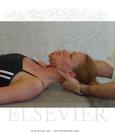Cervical Distraction Test: Difference between revisions
Nikki Arnold (talk | contribs) No edit summary |
Nikki Arnold (talk | contribs) No edit summary |
||
| Line 8: | Line 8: | ||
To test for the presence of cervical radiculopathy.<ref name="Users' guide">Flynn TW, Cleland JA, Whitman JM. Users' guide to the musculoskeletal examination. United States; Evidence in Motion:2008.</ref> <ref name="Malange et al">Malange GA,Landes P, Nadler SF. Provocation tests in the cervical spine examination: historical basis and scientific analyses. Pain Physician. 2003;6:199-205</ref><br> | To test for the presence of cervical radiculopathy.<ref name="Users' guide">Flynn TW, Cleland JA, Whitman JM. Users' guide to the musculoskeletal examination. United States; Evidence in Motion:2008.</ref> <ref name="Malange et al">Malange GA,Landes P, Nadler SF. Provocation tests in the cervical spine examination: historical basis and scientific analyses. Pain Physician. 2003;6:199-205</ref><br> | ||
== Technique<br> | == Technique<br> == | ||
Patient lies supine and the neck is comfortably positioned. Examiner securely grasps the patient's head under the occiput and chin and gradually applies an axial traction. | |||
A positive test is the reduction or eliminatin of symptoms.<ref name="Wainner and Gill">Wainner RS, Gill H. Diagnosis and nonoperative management of cervical radiculopathy. J Ortho Sports PT.2000 Dec;30(12):728-744.</ref> | |||
[[Image:Cervical_distraction.jpg]] | |||
== Evidence == | == Evidence == | ||
Revision as of 05:31, 8 December 2009
Original Editor - Your name will be added here if you created the original content for this page.
Lead Editors - Your name will be added here if you are a lead editor on this page. Read more.
Purpose
[edit | edit source]
To test for the presence of cervical radiculopathy.[1] [2]
Technique
[edit | edit source]
Patient lies supine and the neck is comfortably positioned. Examiner securely grasps the patient's head under the occiput and chin and gradually applies an axial traction.
A positive test is the reduction or eliminatin of symptoms.[3]
Evidence[edit | edit source]
Provide the evidence for this technique here
Resources[edit | edit source]
add any relevant resources here
Recent Related Research (from Pubmed)[edit | edit source]
Extension:RSS -- Error: Not a valid URL: Feed goes here!!|charset=UTF-8|short|max=10
References[edit | edit source]
References will automatically be added here, see adding references tutorial.
- ↑ Flynn TW, Cleland JA, Whitman JM. Users' guide to the musculoskeletal examination. United States; Evidence in Motion:2008.
- ↑ Malange GA,Landes P, Nadler SF. Provocation tests in the cervical spine examination: historical basis and scientific analyses. Pain Physician. 2003;6:199-205
- ↑ Wainner RS, Gill H. Diagnosis and nonoperative management of cervical radiculopathy. J Ortho Sports PT.2000 Dec;30(12):728-744.







